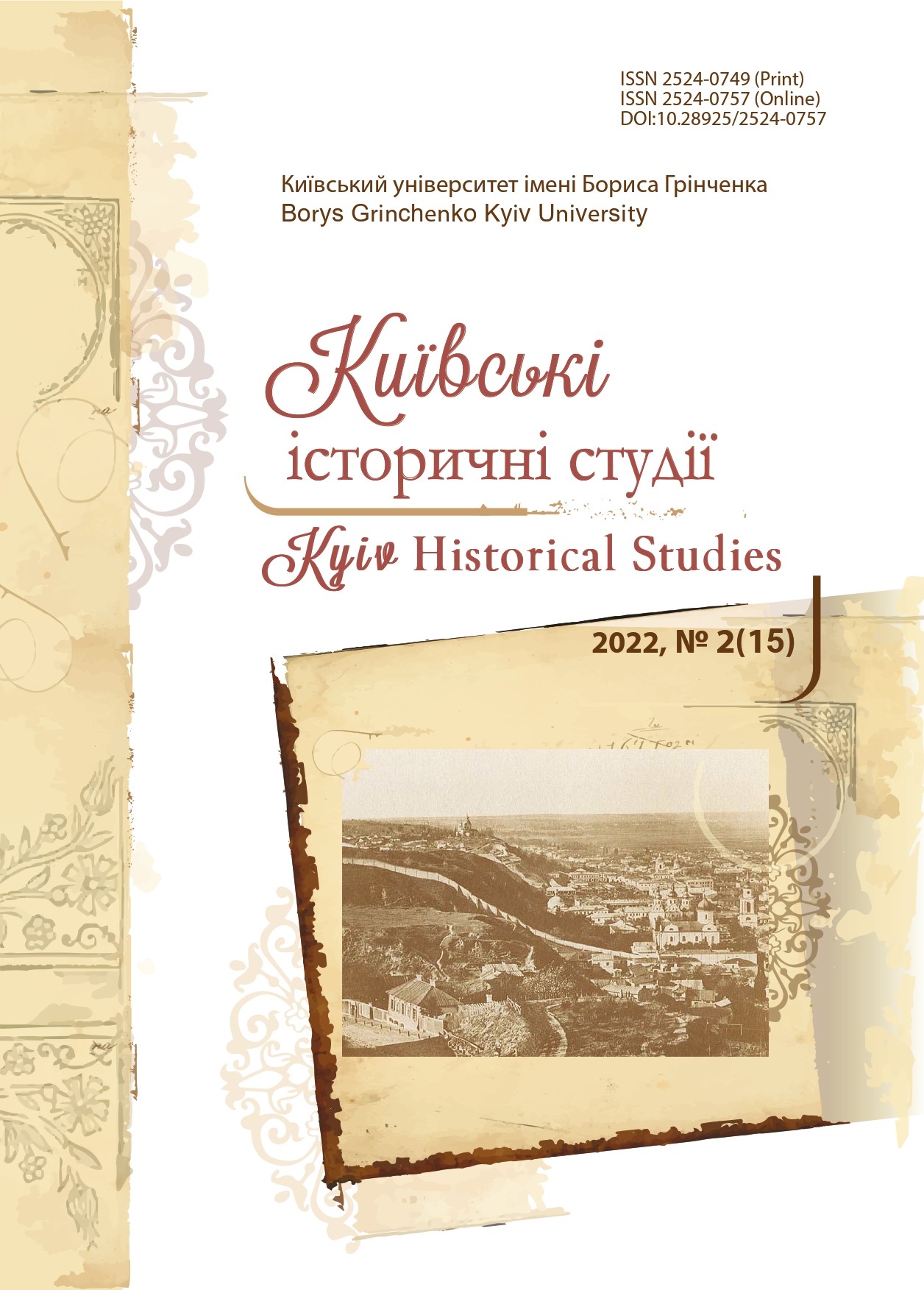Сільські вчителі і Голодомор 1932–1933 років: низова преса як індикатор стратегій влади
DOI:
https://doi.org/10.28925/2524-0757.2022.28Ключові слова:
Голодомор, районна преса, учителі, школа, виконавціАнотація
У статті розгялаються політичні технології влади з перетворення освітян села на виконавців Голодомору в Україні. Доведено, що, залучаючи сільських учителів до реалізації свого курсу на селі, влада одночасно діяла в руслі спроб приховати цілеспрямовану організацію вбивства голодом. Тягар мобілізації вчителів на хлібозаготівлі та інші заходи було перекладено на плечі районних відділів освіти, громадських організацій та зборів самих учительств, яке в кожному випадку наче добровільно ухвалювали відповідні рішення. Однак про справжні наміри щодо вчителів виразно свідчать зміст і тональність районних газет, сповна висвітлюючи керівництво процесом збоку партійних та радянських органів.
Завантаження
Посилання
Conquest, R. (1986). The Harvest of Sorrow: Soviet Collectivization and the Terror-Famine. NewYork. Oxford, Oxford University Press, 411 p.
Hudz, V. (2015). Vitczyznizni istoryky pro informatsiinu blokadu [podii 1932–1933 rokiv v ukranskomu seli, Graniistorii: zb. nauk. pr.: GIIM DVNZ “DDPU”. Vyp. 8. C. 33–45.
Jakubovski, I. (2021). Kyiv and Chernihiv Regional Newspapers as a Source of Strategies of the Authority Related to Involving Pupils as Executors of Holodomor Policyin 1932–1933s. Kyiv Historical Studies. No 2, pp. 117–123. [іn Ukrainian].
Kulchytski, S. (2013). Chervonyi vyklyk. Istoria komunizmu v Ukraini vid ioho narodzhennia do zahybeli, Vol. 2. Kyiv: Tempora, 628 p. [іnUkrainian].
Marochko, V. I. (2017). Statystyka zhertv Holodomoru: antropolohichno-demohrafichnyi dyskurs. Ukrainian Historical Journal. 2017. No 5, pp. 112–132. [іnUkrainian].
Podkur, R. J., Vasylev, V. J., Kravchenko, P. M., Latsyba, V. P., Melnychukand I. P., Petrenko, V. I. (Eds). (2007). Holod ta Holodomor na Podilli 1920–1940 rr. Zbirnyk dokumentiv ta materialiv.Vinnytsia: DP „Vinnytska kartografichna fabryka”, 704 p. [inUkrainian].
Postanovy partii ta uriadu pro shkolu (1947). Kyiv: Derzhavne uchbovo-pedagogichne vydavnytstvo. 152 p. [іnUkrainian].
Pyrig, R. (Ed.). (2007). Holodomor 1932–1933 rokiv v Ukraini: dokumenty і materialy. Kyiv: «Kyiv-MohylaAkademy”, 1128 p. [іnUkrainian].
Pyrig, R. J., Kentii, A. V., Komarova, I. L., Lozytskyi, V. S. And Soloviova, A. A. (Eds.).(1990). Holod 1932–1933 rokiv na Ukraini: ochyma istorykiv, movoiu dokumentiv.Kyiv: Vydavnytstvo politychnoi literatury Ukrainy, 605 p [in Ukrainian].
Опубліковано
Як цитувати
Номер
Розділ
Ліцензія
Авторське право (c) 2022 Ігор Якубовський

Ця робота ліцензується відповідно до Creative Commons Attribution-NonCommercial-ShareAlike 4.0 International License.
Автори, які публікуються у цьому журналі, залишають за собою право на авторство своєї роботи та передають журналу право першої публікації цієї роботи на умовах публічної ліцензії Creative Commons: Attribution-NonCommercial-ShareAlike 4.0 International (CC BY-NC-SA 4.0), котра дозволяє іншим особам вільно розповсюджувати опубліковану роботу з обов'язковим посиланням на авторів оригінальної роботи та першу публікацію роботи у цьому журналі.














